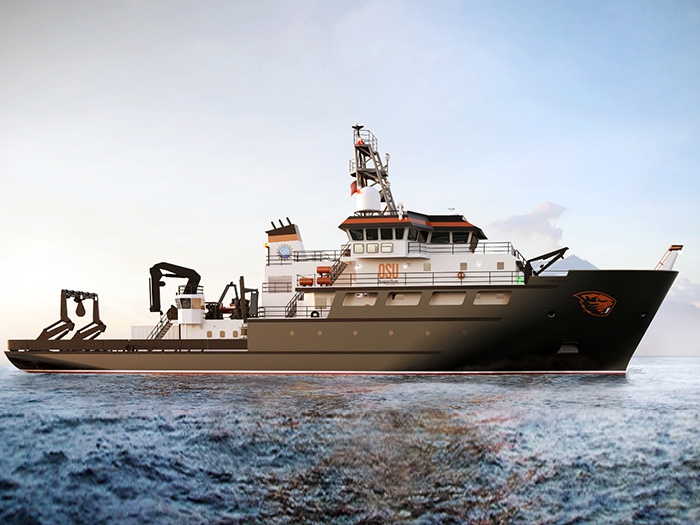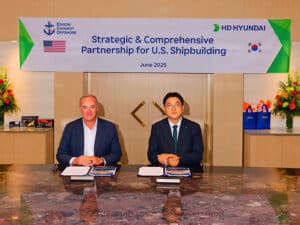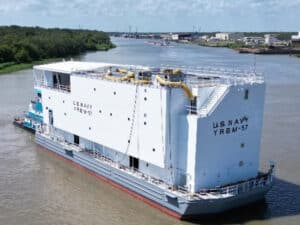
Gulf Island picks Siemens as research vessel propulsion provider
Written by Nick Blenkey
NOVEMBER 3, 2017 — Houma, LA, based Gulf Islands Shipyard has selected Siemens Marine Solutions as the propulsion single source vendor (SSV) for the 193 ft x 41 ft National Science Foundation (NSF) Regional Class Research Vessel (RCRV) it is building for Oregon State University (OSU).
NSF selected OSU to lead the design and coordinate the construction of up to three vessels and the shipbuilding contract includes options for two more vessels. OSU selected Glosten for the functional design of the environmentally-friendly and acoustically-quiet vessel.
The new vessel will feature Siemens Blue Drive PLUSC Diesel Electric Propulsion (DEP) system, a unique diesel-electric solution that increases safety, cuts operational costs, improves lifecycle economics and decreases the environment footprint. Reducing noise and vibration on the water during research activities is critical, and the Blue Drive PLUSC is capable of reducing varying engine loads to optimize operations.
As the propulsion and control SSV, Siemens is providing an integrated power and energy system (IPES) scope that includes the propulsion thrusters, engines and Dynamic Positioning (DP) system, as well as Siemens motors, remote diagnostic system, diesel generator sets, switchboards and power distribution, alarm and monitoring system, on-board sensors and condition based monitoring. In addition, Siemens will provide the project management, engineering studies, propulsion system integration and engineering services to support commissioning up to sea trial and delivery.
“When it comes to marine research vessels, Siemens has established itself as the go-to technology provider, with proven vessel automation and electrification solutions that exceed the ever-changing industry challenges that shipbuilders, naval architects, owner/operators and regulators face on a daily basis,” says David Grucza, Director of Siemens Drilling and Marine, U.S. “In the design of this RCRV, Siemens worked with all stakeholders to provide a totally integrated vessel based on the unique mission and operational profile of the RCRV and the needs of the research community.”
Siemens technology can also be found on two recently-commissioned research vessels. The R/V Neil Armstrong (AGOR 27) (Auxiliary General Oceanographic Research), operated by Woods Hole Oceanographic Institute and the R/V Sally Ride (AGOR 28) operated by Scripps Institution of Oceanography, both feature Siemens marine propulsion, electrification and control solutions.
Siemens has been in the marine business dating back to 1847, when Siemens purchased the Faraday, a specially-designed ship designed to lay cables across the Atlantic Ocean between England and America. Siemens installed a generator and bright arc lamp on-board the vessel in 1877, the first case of electricity on a ship, allowing the crew to work during the night. Later, in 1886, Siemens founder, Werner von Siemens built the world’s first electrically-powered ship, the Elektra.



![NOAA Ship Oscar Dyson working in the Bering Sea in Alaska. [Photo: NOAA Marine and Aviation Operations/CDR Carl Rhodes]](https://www.marinelog.com/wp-content/uploads/2025/06/blobid1_1750193597078-300x225.jpg)

Leave a Reply
You must be logged in to post a comment.